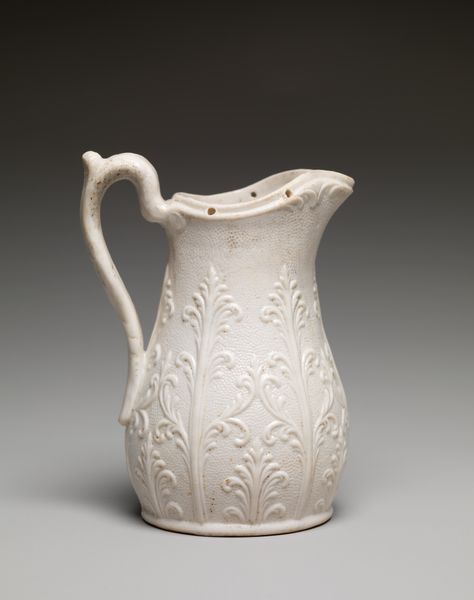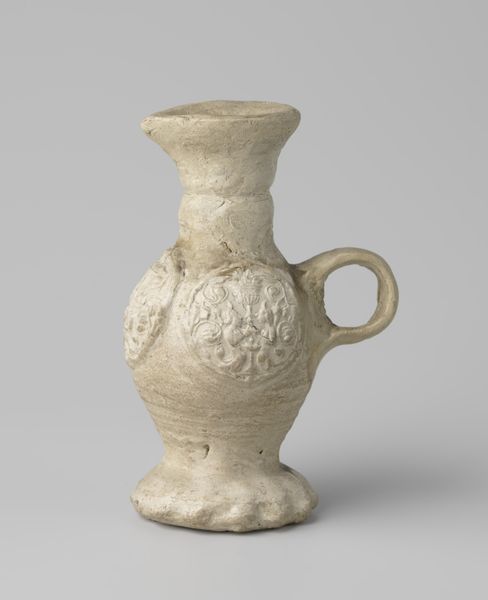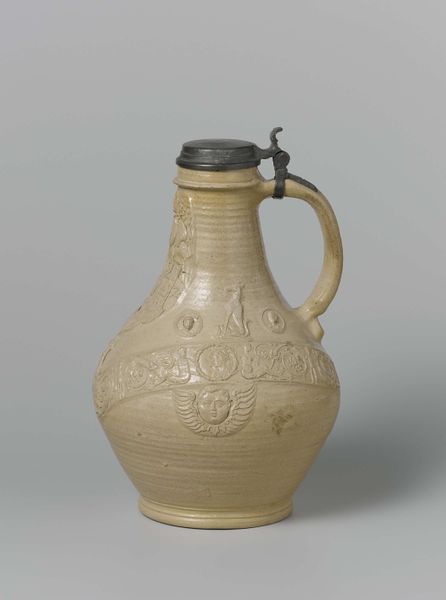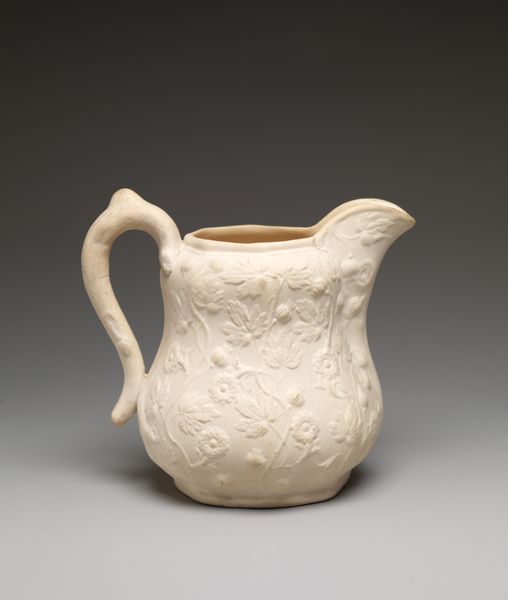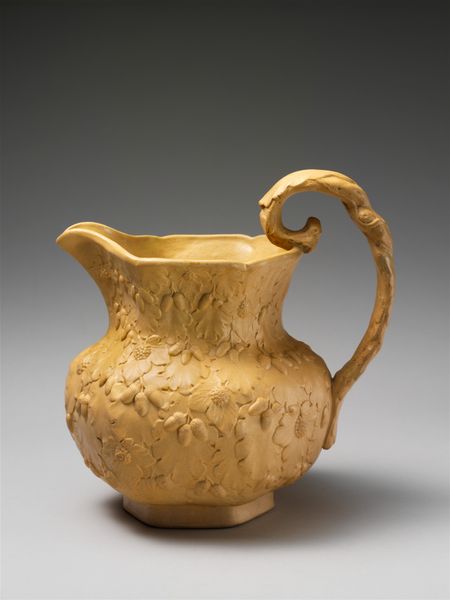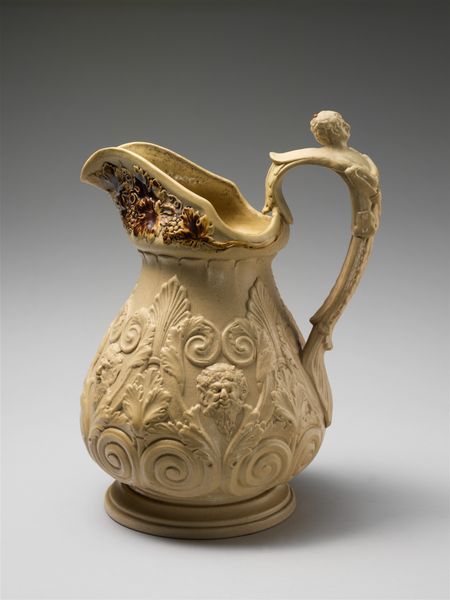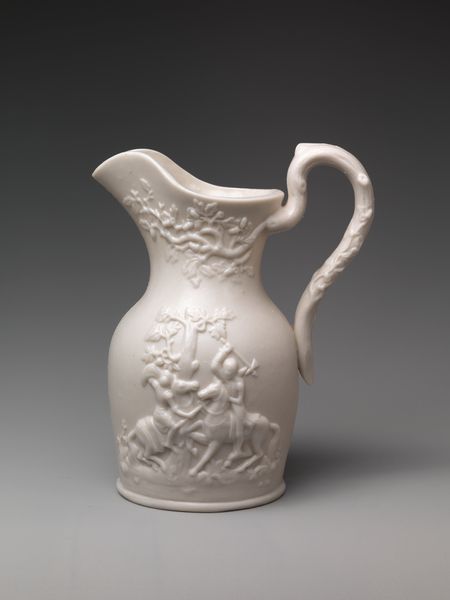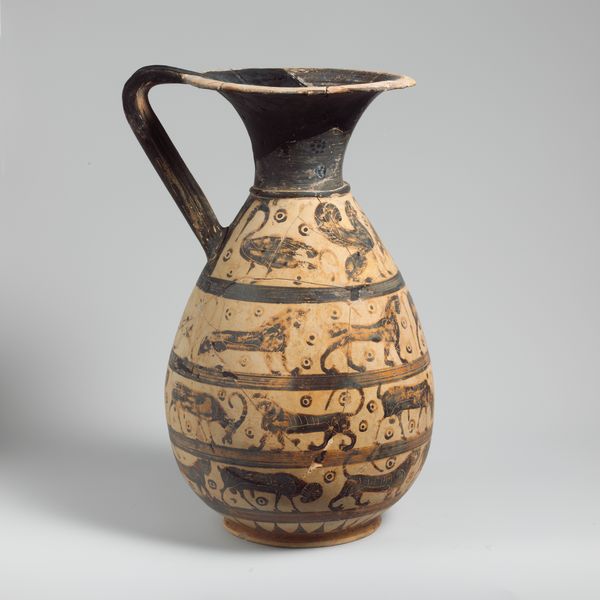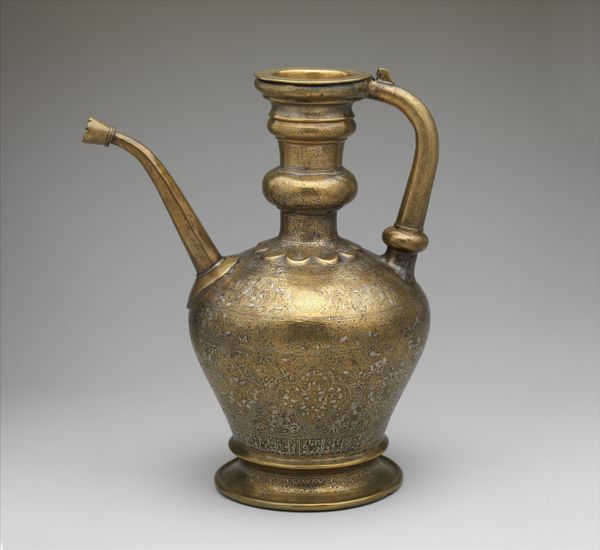
ceramic
#
3d sculpting
#
3d printed part
#
war
#
product fashion photography
#
ceramic
#
jewelry design
#
retro 'vintage design
#
vessel
#
food illustration
#
product design photgrpaphy
#
wash background
#
metallic object render
#
watercolour illustration
#
decorative-art
Dimensions: H.: 19.1 cm (7 1/2 in.)
Copyright: Public Domain
Editor: Here we have a pitcher created sometime between 1832 and 1839 by the American Pottery Manufacturing Company, currently residing at the Art Institute of Chicago. It’s crafted from ceramic, and what strikes me immediately is the uniform, almost sculptural quality, like a solid block of carved material rather than a functional vessel. What catches your eye about it? Curator: Its monolithic appearance is indeed compelling. Notice how the artist employed a complex design of relief decorations to cover the entire surface of the ceramic vessel. These textured surfaces create an interplay of light and shadow, altering our perception of its form. The symmetrical balance also contributes to a unified viewing experience. The handle’s shape and ornamentation, echoed across the piece, establishes a pleasing harmony. Editor: So you’re seeing it as an exercise in form and balance, rather than as just a useful object? Curator: Precisely. Let’s examine how the vessel’s silhouette is a key element, the curved spout drawing your attention to its volume and functionality. Yet the applied reliefs create a secondary layer of visual complexity, transforming the pitcher into something more than merely utilitarian. The relationship between these levels, of shape and texture, creates an art piece. How would you characterize the impact of the handle's scrolling design? Editor: I think the scrolls soften the geometrical form. Without them it may seem stark, uninviting almost. Curator: The contrasting curvilinear features underscore the interplay of organic versus geometric structures, which generates the tension so essential in art, regardless of epoch. Editor: It is amazing to view it as something beyond functionality. It makes me appreciate the attention to detail so much more. Curator: Exactly! Observing how the manipulation of line, texture and form elevates the piece, from functionality to aesthetic sophistication, provides insight into art in daily objects.
Comments
No comments
Be the first to comment and join the conversation on the ultimate creative platform.

